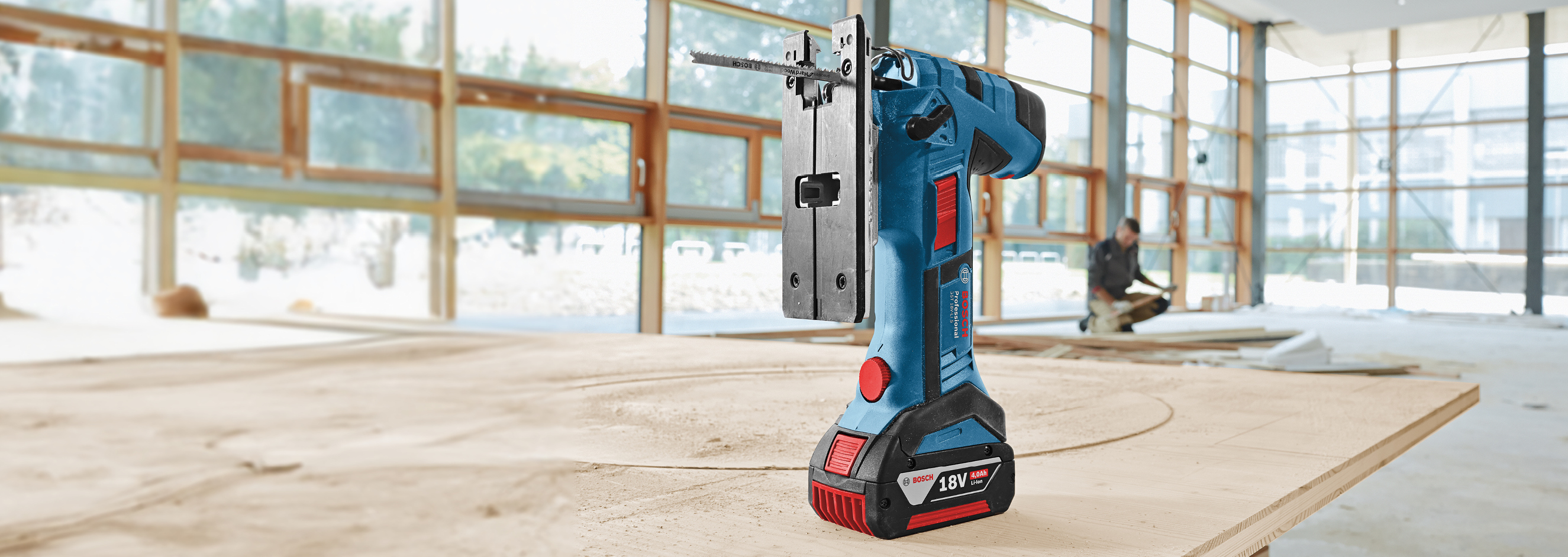10 differences between jigsaws

10 differences between jigsaws
A jigsaw is especially suitable for cutting all kinds of shapes in various materials. For this, it is important to use a saw blade that is suitable for the material to be cut and the shape. But it is at least as important to choose the right jigsaw when purchasing, because there are big differences in jigsaws. We list them below.
What jigsaw to buy?
The first consideration when buying a jigsaw is the choice between a battery-powered or an electric-powered saw. Generally speaking, the electric-powered jigsaw will provide more power, but the cord can get in the way quite a bit and when used on a construction site, a socket is not always available. In these situations, a cordless machine is a better choice. Please note that not every cordless drill comes with a battery. Especially in the professional series this is not always the case because the batteries are multi-applicable for several machines of the same brand. A cordless machine without battery is therefore a good choice for those who already have batteries of the brand in question; keep an eye out for current "free battery actions"!
Jigsaw with D or T handle?
Jigsaws vary in model. The most common is the so-called D model, but there are also jigsaws with, for example, a T-shape. There are actually no functional differences. The T-handle may be easier to use for sawing in ceilings or similar, but ultimately that is a matter of personal preference.
10 points of interest
Ten important points of comparison when buying a jigsaw are:
- Cutting depth
- Number of strokes per minute
- Saw stroke length
- Swing position
- Dust extraction
- Dust blower
- Integrated lighting
- Keyless saw blade replacing
- Adjustable sole for miter cuts
- Keyless miter sole
Material to cut
It is useful to know what material you are going to cut most and in what thicknesses when you purchase a jigsaw. This is important for the maximum cutting depth, but also for the required number of strokes per minute. By the way, the number of strokes per minute not only has a maximum, but sometimes also a minimum. For hard materials, a lower number of strokes per minute is usually recommended. In that case, the minimum number of strokes per minute is also important. The saw stroke length is also essential. With more saw stroke length, fewer strokes per minute are required for the same performance.
Most jigsaws have three pendulum positions. In these, the saw blade moves not only up and down, but also forward and backward. This cuts faster, but also produces more and coarser chips.
Ease of use
Good dust extraction is critical from a technical health and safety point of view; from a technical point of view, it is very pleasant when the sawdust is blown away at the front of the machine. Integrated lighting for illuminating the saw line further increases the ease of use.
Anyone who is going to saw many materials and shapes will often change saw blades. Then it is convenient if the saw blade can be changed without needing a wrench or other tools. The same goes for adjusting the sole for cutting at an angle. Note that the sole is sometimes freely adjustable and sometimes only at set positions, such as 45° and 22.5°.
Anti-scratch attachment soleplate
A handy tool, in the package of some machines, is an anti-scratch attachment soleplate. For rough materials, this is not necessary, but when cutting sensitive, beautifully finished surfaces, this soleplate helps to prevent damage.
Finally: It may be wise to pay attention to the price of the saw blades, although jigsaws are not that expensive.
Dealer
Toolnation has a wide range of jigsaws, both electric and battery powered. Toolnation is a premium dealer of many brands and at Toolnation you will often receive extra warranty. We also have our own service repair workshop. Conditions of the extra guarantee can be found at www.toolnation.com/warranty-conditions.
 Number 1 in professional tools
Number 1 in professional tools